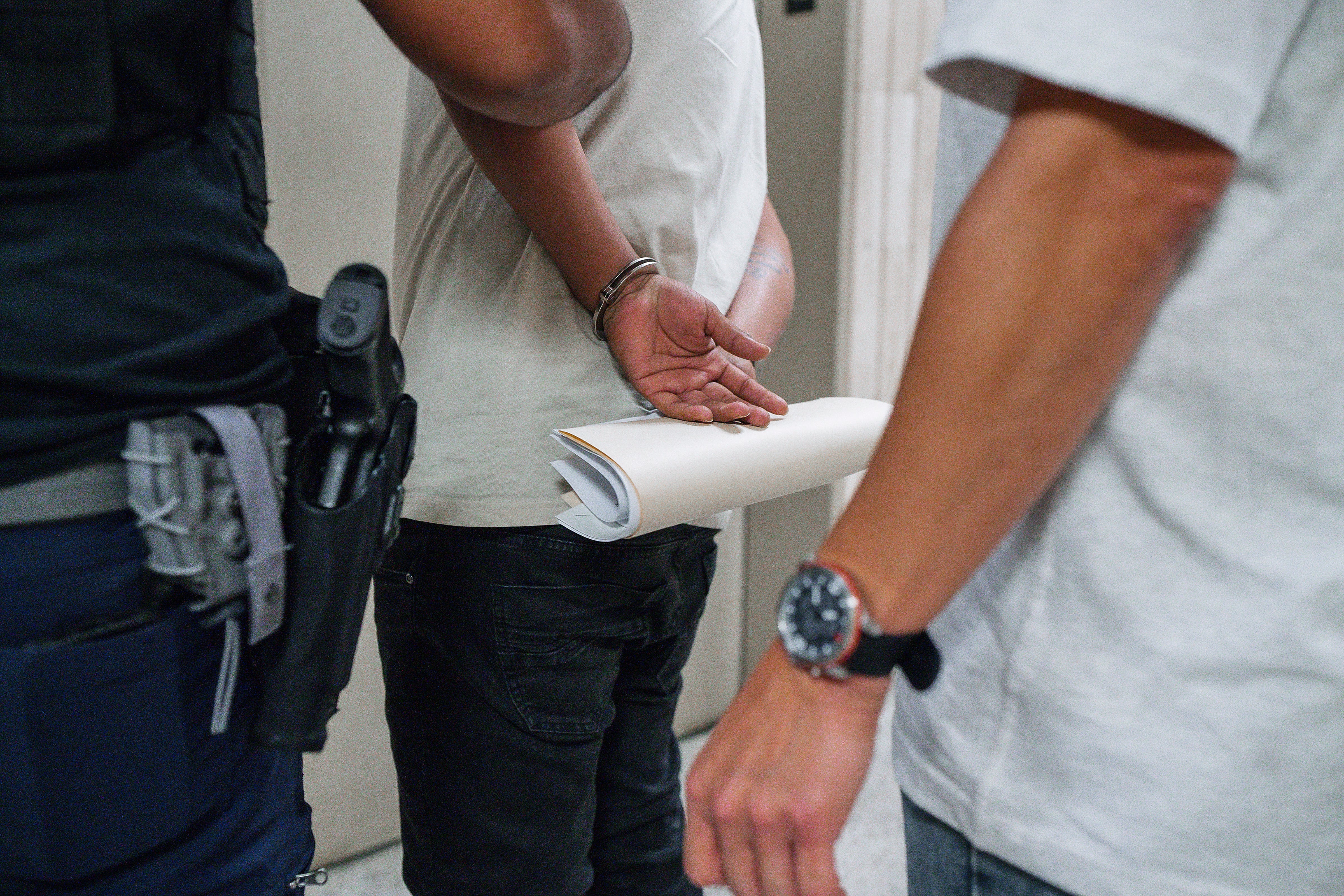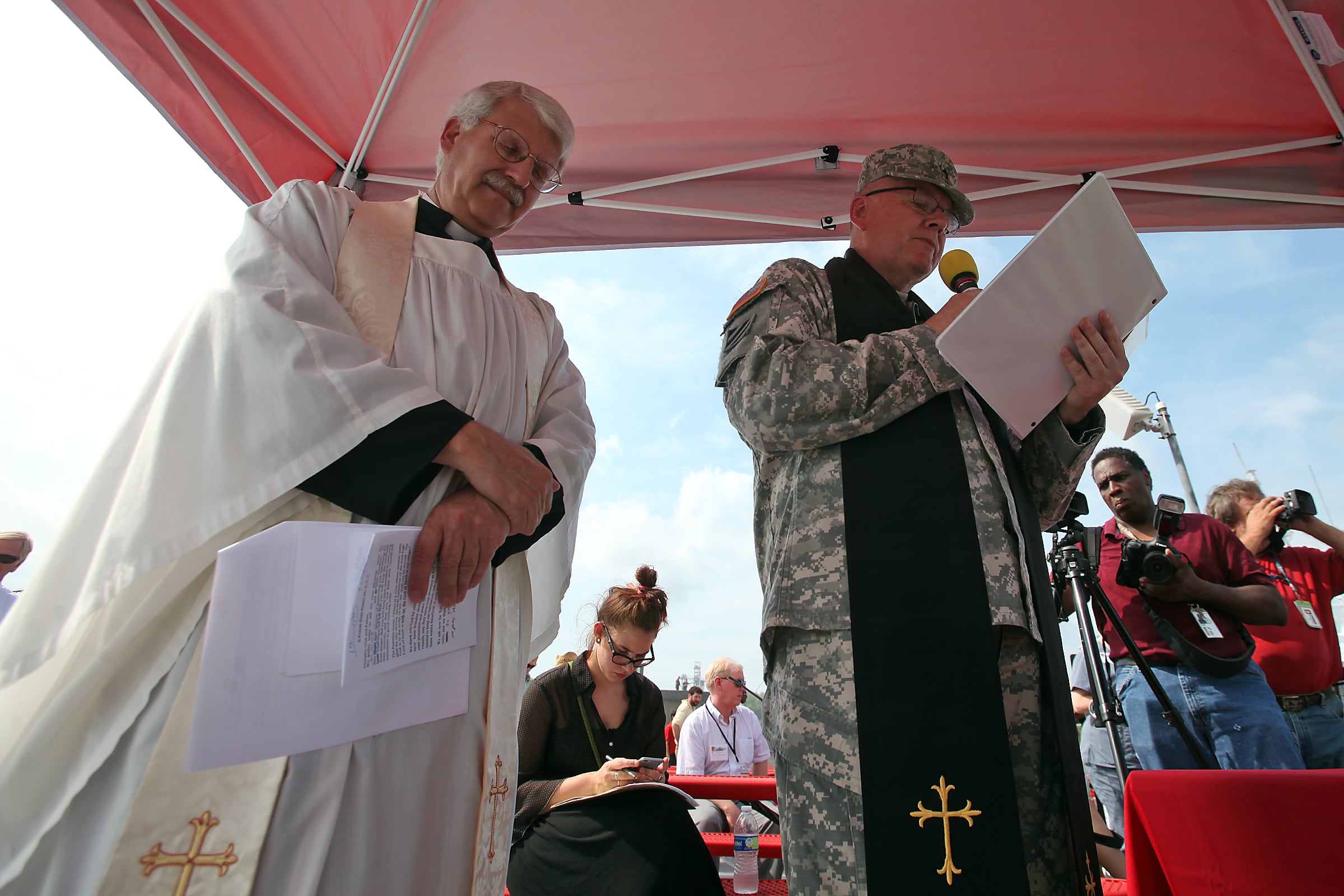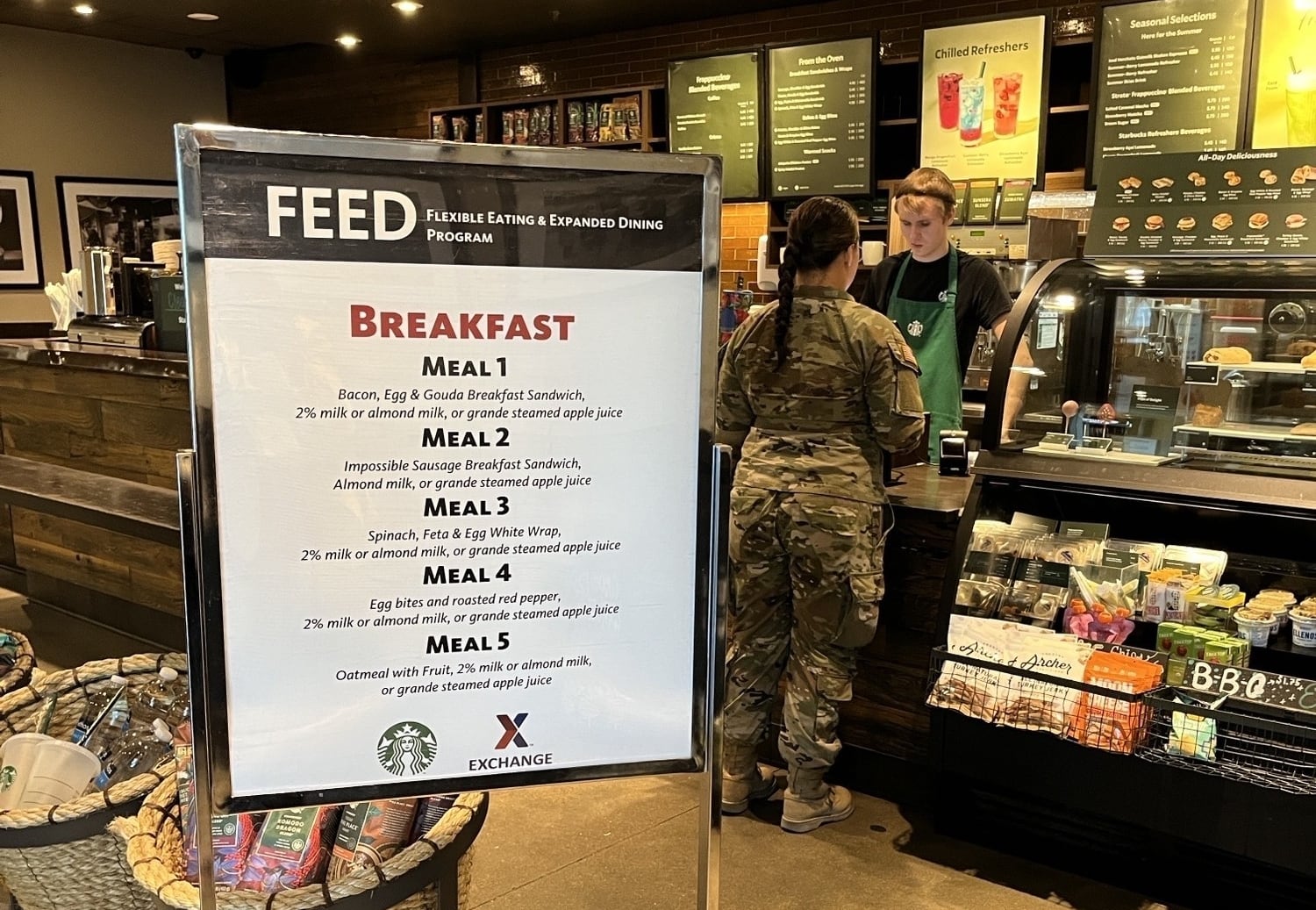Lt. A.D. Wallace knew things were about to get bad as soon as he got his helicopter airborne the morning of Aug. 13 over flood-stricken Louisiana.
Amid torrential downpours at Coast Guard Air Station New Orleans, Louisiana, Wallace and his aircrew studied their weather radar.
"That was the first time we looked at each other as a crew and said, 'OK, this is something serious,' " he recalled of the start of an arduous week in August, as Coast Guardsmen worked alongside local officials to rescue Baton Rouge residents from flooding.
He flew the bright orange MH-65D Dolphin helicopter toward the Baton Rouge airport before ducking beneath the clouds.
"On our way in, you could see little openings in the clouds below us and immediately you could see the devastation — water where there should not have been," he recalled.
Back at Sector New Orleans, Cmdr. Kelly Denning was put in charge as the incident commander, first coordinating responses to a trickle of calls for help and soon became a deluge.
"We knew the rain was coming in. We were watching the weather closely," Denning said, one of the many responders to recall their role in relief efforts in interviews with Navy Times. "The calls started trickling in Saturday morning, but then it became readily apparent that the flooding was going to be much worse than I think anybody anticipated."
Six days later, Sector New Orleans boat and air crews tallied hundreds of hours on scene, rescuing 245 people and 71 pets, while assisting over 3,000 others.
The Baton Rouge area survived millions of gallons of rainfall, totaling two feet in some areas and resulting in 13 deaths.
The Coast Guard came together with the Louisiana National Guard, the state's Office of Homeland Security and Emergency Preparedness and local authorities to help more than 30,000 people, according to statistics from the governor's office.
After the flooding subsided, members of Sector New Orleans shared their experiences over the six-day relief effort.
Calls poured in during the first 36 hours of the flooding, Kelly said, including a period that first night when AT&T services went down.
Many residents couldn't call their local authorities near Baton Rouge, she said, but were able to get through to the Coast Guard station over in New Orleans.
High water
For every call that made it to the air station, helicopter crews happened upon a few more.
"We started out the majority of each flight with specific tasking in mind delegated from Sector New Orleans," Wallace said. "Once they were completed or assisted, we didn't have to look too far to find someone flagging us down in need of assistance. "
On his second descent, Chief Aviation Survival Technician P.J. Ornot, a rescue swimmer, spotted a young man standing in the street waving his arms. The man's mother and grandmother were in their house, unable to walk.
"He'd been trying to flag down boats all morning without success," Ornot recalled. "So I went in, grabbed the mother and grandmother, both sitting in La-Z-Boy chairs, non-ambulatory, and the water was up to their chests at that time."
Both women were very overweight, he said, so he carried the grandmother into the street to be hoisted by the helicopter first.
On his way out with the mother, a boat was rounding the corner, so he loaded her on with her son.
This teamwork was common throughout, the crews said. Many civilians had their personal boats and rafts patrolling the neighborhoods, picking up stranded neighbors.
"If you were hovering above an area of people who needed to be rescued, that usually got the boats to come out," said Lt. Cmdr. Neal Corbin, the second pilot on scene. "Being able to provide the loud noise and the orange thing could bring attention to a pocket that had been missed."
That saved time on multiple hoists, Wallace, and mitigated the risks of trying to hover over thick tree cover and power lines while safely dropping and recovering the basket.
"If we could attempt to land and avoid a very risky hoist, we would do that," he said. "The problem was with the very water-saturated fields, there was a good chance we would have sunk into that field."
Often, Corbin added, he would drop his rescue swimmer into an area and the swimmer would assess the situation and recommend how to treat every case.
In one apartment complex, he said, the swimmer triaged 37 families, sorting out who was ambulatory, who needed a medevac.
In some cases, residents were suffering from heart attacks or dialysis patients needed to get to a hospital for their regular treatments.
"We ended up, quote 'assisting' more people than actually hoisting in the helicopter," Corbin said. "That's just time consuming. We could have been out there three weeks and we wouldn't have been able to hoist everybody."
It was a similar story for the boat crews, who were given exact addresses by the incident commander, but were constantly improvising.
"A lot of it was people flagging us down as we would drive by," Chief Warrant Officer Adam Authement said. "In a perfect world, we would pick people up and drop them off at collection points."
Coast Guard small boats also helped the National Guard collect people by trailing behind their high-water vehicles, breaking off to pick people up and bring them to the truck.
"Area knowledge was very difficult," Authement added. "We had civilians ride in the boats with us that knew the area, to guide our rescue crews to the right areas."
There were also some very close calls. Lt. Josh Wofford, Sector New Orleans' air liaison officer, recalled one story of a requested medevac for a five-day-old newborn.
They directed the family to a nearby bridge, where an MH-65 picked up the parents and the infant, who wasn't showing any vital signs, and flew to the nearest hospital.
"We went home that night thinking that the five-day-old didn't make it," Denning said. "An hour later we got a text that they were able to revive him."
Another call came from the family of a Coast Guard commander stationed at headquarters in Washington, D.C., whose daughter was trapped with her family on the balcony of their apartment.
"That just kind of hit home, that wow, this is also affecting our Coast Guard family," Denning said.
'A moving target'
Response teams put in eight- to 15-hour days that week.
"The six days we were there, each day looked different," Authement said. "This whole operation as kind of a moving target."
Some nights they were bunking in local high schools, others it was American Legions, he said.
"It was very dynamic, obviously, because it's water — it's moving," Denning said. "We would set up in one area, then flooding moved southwest."
It was back-to-back-to-back rescues for the helicopter crews, who were only hemmed in by flight-hour limits for their own health and safety.
"I think I did downtown Denham Springs when the Walmart was under 8 feet of water and the Bass Pro Shops was flooded out," Corbin said. "I knew we had a serious problem. It's not normal for a downtown of a town to be flooded that bad with no notice."
That first day, Wallace and Corbin switched off duties several times, giving one a chance to catch his breath while downloading the situation with the other.
"He and I shared a quick face-to-face on what we completed or were trying to do, and the other would either continue on with that or see that it was already being handled and move onto the next thing," Wallace said.
And because there were no fixed-wing aircraft to survey the damage until days later, the pilots had to keep in touch with the sector to paint the picture.
"We all knew what was going on and were just being methodical — we can't save everybody in the situation," Corbin said. "Just keeping our crews safe and doing as much as we can but being very deliberate and logical about it. Staying calm because everybody else is freaking out."
But the Coast Guardsmen had all practiced coordinated disaster response with other Louisiana agencies, and for some, it wasn't their first time.
Authement responded to various floods in his career, Ornot was sent to New Orleans on temporary additional duty from North Carolina during Hurricane Katrina, and Denning responded to Katrina from a cutter in the Gulf of Mexico soon after leaving her first tour in New Orleans.
Now they're getting involved with relief and rebuilding, including aid to one boat crew member who lost everything and some members of Marine Safety Unit Baton Rouge who were affected.
Wofford said he's interested in meeting with some of the students the station does outreach with, as their school was destroyed and officials are looking for a temporary set-up.
"Even though their houses were flooded, they told us they were able to look up and see Coast Guard helicopters flying over all the time," he said. "Maybe we can visit with them at their new school location."
Meghann Myers is the Pentagon bureau chief at Military Times. She covers operations, policy, personnel, leadership and other issues affecting service members.





